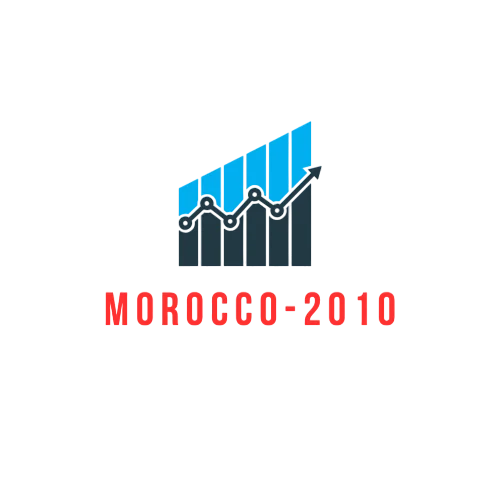Ever wondered why some countries seem to thrive while others struggle? It all boils down to their economic systems. Understanding the four economic systems isn’t just for economists in stuffy suits; it’s crucial for anyone who wants to make sense of the world. Whether you’re a budding entrepreneur or just someone trying to navigate the grocery store prices, knowing these systems can give you the upper hand.
From the free-spirited market economy to the tightly controlled command economy, each system has its quirks and perks. Get ready to dive into a world where supply and demand dance a tango, and government intervention plays the role of the sometimes clumsy partner. By the end of this journey, you’ll not only impress your friends at parties but also decode the economic mysteries shaping our daily lives.
Table of Contents
ToggleWhat Are The Four Economic Systems
Four primary economic systems exist that define how resources are allocated and how economic decisions are made. Understanding these systems helps in comprehending the broader implications for individuals and countries.
- Traditional Economy: Economic decisions stem from customs and traditions in a traditional economy. People rely on agriculture, fishing, and hunting. This system promotes stability but may struggle with modern market changes.
- Market Economy: In a market economy, supply and demand dictate prices and production levels. Individuals and businesses freely make decisions. The government’s role is minimal, allowing for innovation and competition.
- Command Economy: A command economy features significant government intervention. Central authorities control production and distribution of goods. This system aims for equality but can lead to inefficiencies and a lack of consumer choice.
- Mixed Economy: Characteristics of both market and command economies appear in a mixed economy. The government regulates certain sectors while allowing free market principles to operate in others. This balance fosters economic flexibility and social welfare.
These four economic systems each offer distinct advantages and disadvantages. Knowledge about them empowers individuals to make informed choices and understand the economic landscape they navigate daily.
Traditional Economic System
Traditional economies rely heavily on customs and traditions. These systems prioritize subsistence farming, fishing, and hunting, which dictate their decision-making processes.
Characteristics of Traditional Economy
Communities often follow long-standing practices when determining production methods. Resources are mainly allocated based on historical patterns, leading to social stability. Limited technology use distinguishes traditional economies, as they emphasize manual labor and artisanal skills. Trading goods directly without a cash economy is common, fostering strong community ties. Agricultural cycles typically shape their calendar, influencing daily life routines and cultural events.
Advantages and Disadvantages
One notable advantage lies in the stability offered through established customs, which can sustain communities over generations. Economic roles are well-defined, ensuring everyone knows their responsibilities. However, disadvantages exist, such as resistance to change, which can hinder progress. Traditional economies frequently struggle to adapt to modern technological advancements, impacting their overall growth. Limited access to resources and opportunities often restricts economic expansion, making these systems vulnerable in a rapidly changing global landscape.
Command Economic System
A command economic system features significant government control over production and distribution. This structure aims to distribute resources and wealth more equally among citizens.
Characteristics of Command Economy
Central planning defines a command economy. Governments dictate production goals, resource allocation, and pricing strategies. In this system, private ownership is limited, with state entities controlling most businesses and services. Additionally, emphasis is placed on collective rather than individual profit, fostering a sense of community, yet potentially stifling personal initiative. The absence of competition can lead to slow innovation rates, affecting overall economic growth.
Advantages and Disadvantages
Command economies offer several advantages. Governments can allocate resources efficiently during crises, ensuring essential goods reach those in need. This system can promote economic equality by reducing income disparities among citizens. However, significant drawbacks exist as well. Inefficiencies often arise due to a lack of competition, leading to shortages and surpluses. Limited consumer choice can frustrate citizens who desire diverse products. Furthermore, central planners may struggle to effectively respond to consumer needs, resulting in dissatisfaction among the population.
Market Economic System
A market economy relies on supply and demand to dictate prices and production levels. Minimal government intervention allows for greater entrepreneurship and competition, shaping a dynamic economic landscape.
Characteristics of Market Economy
In a market economy, private ownership of resources predominates. Consumer choice drives market conditions, influencing production and pricing. Innovation thrives due to competition among businesses. Additionally, market adjustments occur rapidly in response to changes in consumer preferences. Flexibility defines this system as firms adapt quickly to achieve efficiency and meet demand.
Advantages and Disadvantages
Market economies promote a high level of efficiency by rewarding innovation and responsiveness. Consumers benefit from a wide variety of goods and services, reflecting their preferences. Profits incentivize businesses to improve quality. However, market economies often create income inequality, with wealth concentrated among a few. Additionally, essential services may be underprovided, leading to challenges in addressing societal needs. These drawbacks can create tensions within the overall system.
Mixed Economic System
A mixed economic system combines features of both market and command economies. This hybrid structure allows governments to intervene in specific areas while encouraging free market dynamics in others.
Characteristics of Mixed Economy
Governments often regulate key industries to ensure fair practices. Private ownership coexists with public ownership, creating diverse economic opportunities. In a mixed economy, supply and demand influence prices, but regulations can shape market outcomes. Businesses operate competitively while adhering to government standards. Social welfare programs may exist to support vulnerable populations, balancing economic efficiency with equity. Economic flexibility fosters both innovation and social responsibility.
Advantages and Disadvantages
A mixed economy offers several advantages. It encourages innovation through competition while addressing social welfare needs. Diverse ownership structures allow for various production methods, potentially leading to better resource use. On the downside, government intervention can lead to inefficiencies and bureaucratic challenges. Regulatory measures may stifle competition in certain sectors. Balancing market freedom and government control can sometimes create tensions, impacting overall economic performance.
Understanding the four economic systems is crucial for navigating today’s complex world. Each system presents unique advantages and challenges that affect individual lives and broader societal dynamics. By recognizing how traditional, market, command, and mixed economies operate, individuals can make more informed decisions in their daily activities. This knowledge empowers them to engage with the economic landscape effectively and adapt to changes that impact their financial well-being. As the global economy continues to evolve, staying informed about these systems will remain essential for personal and community prosperity.





